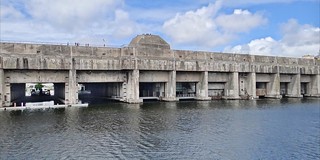Titan: what NASA found in a satellite of Saturn that is bigger than a planet
If the study of the planets of the Solar System is a fascinating topic, the study of its natural satellites is even more so.
The two gas giants of the Solar System, Jupiter and Saturn, are the ones with the greatest number of satellites. Jupiter has the largest satellite in the Solar System: Ganymede. In turn, the largest of Saturn's satellites is Titan, with a diameter of 5,150 kilometers, that is, greater than the planet Mercury (4,879 km), but with a a smaller mass.
Titan is a fascinating world but one that would be uninhabitable for humans, since it is a toxic planet, with an atmosphere abundant in methane and ethane. It has a fog formed by these and other gases that has made its study not exactly easy. To shed light on this interesting satellite,NASA launched the Cassini-Huygens mission in 1997. This unmanned mission reached Titan on July 2, 2004. A few months later, on December 25, the Huygens probe separated from the Cassini probe, penetrating Titan's atmosphere.

In 2010, Sarah Hörst of the University of Arizona noted: "We are discovering that the kind of chemistry that can occur in an atmosphere has intriguing implications for life on Earth and elsewhere." somewhere else in the solar system". Hörst added: "Titan's skies could produce some interesting chemistry: the making of the basic building blocks for life to exist."

NASA has noted that "Titan is Unique in our solar system. Dotted with lakes and dunes, and shrouded in a thick atmosphere of nitrogen and methane, this moon is a frozen time capsule harboring conditions that existed on Earth in its early days. Although the liquid on Titan's surface is methane instead of water, Titan is the only body in the solar system, other than Earth, that has liquid on its surface."
On NASA's discoveries on Titan, the channel Kosmo has published a fascinating video that recreates what the surface and interior of that satellite is like, as well as the plans of the US space agency to re-explore it with the Dragonfly mission, whose launch is scheduled for 2027:
|
Don't miss the news and content that interest you. Receive the free daily newsletter in your email: Click here to subscribe |
- Lo más leído
- A large collection of Volkswagen cars hidden in an abandoned mine in Switzerland
- The Saint-Nazaire submarine base, one of the last bastions of nazi Germany
- The 'Bomber Glacier': The wreckage of a B-29 on a remote mountain of Alaska
- The infiltration of a group of Spanish explorers into the Russian aircraft carrier Minsk
- An old Soviet military plane abandoned from 1971 on a Russian island near Alaska
- The unknown Soviet female cosmonaut who died on a mission: history or hoax?
- A desert in which three strategic bombers from the Cold War are abandoned

 ES
ES






Opina sobre esta entrada: